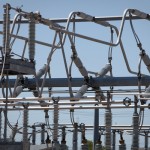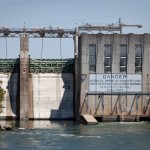What Downton Abbey Can Teach Us About the Future of Energy
 Downton Abbey, the Masterpiece Theatre television show from across the pond, has captured the hearts and fashion sense of many Americans this year. People have fallen in love with the period piece for its drama, romance and history, but the show may also provide a glimpse into our energy future and provide lessons for how to best adapt to major innovations in energy and technology.
Downton Abbey, the Masterpiece Theatre television show from across the pond, has captured the hearts and fashion sense of many Americans this year. People have fallen in love with the period piece for its drama, romance and history, but the show may also provide a glimpse into our energy future and provide lessons for how to best adapt to major innovations in energy and technology.
In case you’re one of the few people left on earth who haven’t fallen in love with the show, Downton Abbey tells the story of a rich family that lives in a castle (the “Abbey” of the title) during World War I. While dealing with the intricacies and politics of inheritance, servile romance and afternoon tea, the characters of the show also have to adapt to a time of rapid innovation.
Telephones, automobiles and electricity all make their way into the world of Downton Abbey during the show, and the at times feeble response of the characters to these new technologies is part of its charm. “First electricity, now telephones,” Violet the Dowager Countess of Grantham, the matriarch of the family says in the first season. “Sometimes I feel as if I were living in an HG Wells novel. But the young are all so calm about change, aren’t they?”
But while Downton Abbey is an affectionate look at the past, the show may actually tell us something about the future of electricity and the best way to adapt to it.
First, let’s look at what electricity was like back then. Like many technologies, early adopters were a select group. “The only people who would have had residential electricity or any type of power during that time are incredibly wealthy people, as you’ll see in the show,” says Phillippa Levine, co-director of the British Studies program at the University of Texas. “I mean it really is a sliver of the population who can afford this at this point. They are as we would say off the grid, because the national grid, which is what produces electricity potentially for everyone in Britain, is built in the 1930s.”
Those that could afford it were sometimes stymied by it, much like the Dowager Countess and her fear of inhaling electric vapors. “I couldn’t have electricity in the house,” she remarks during the first season. “I wouldn’t sleep a wink. All those vapors seeping about.” And she wasn’t alone in being afraid of the new technology. “People had fears that electricity was going to leak out of the walls, leak out of plug points,” Levine says. “I remember my father saying things like that when I was a tiny girl.” It was this “mysterious, invisible thing that nobody really understood,” she says, and it scared everyone in a new kind of way. And like the Dowager Countess, many were hesitant to see its benefits at first. “Oh, such a glare,” she says while gazing up at an electric chandelier. “I feel as if I were on stage at the Gaiety.”
The generators that provided standalone electricity to homes in the era of Downton Abbey were messy, loud devices, Levine says, and so they were relegated to the basement, where much of the servile work was done away from the family’s eyes. “The generators would almost certainly have been in that part of the house, because they would have been making a noise, they might have been smelly,” Levine says. “And it doesn’t matter, of course, if the servants are inconvenienced, because you certainly aren’t going to inconvenience your guests.”

Photo courtesy of the Webber Group
Roger Duncan says that in the future, more people will provide their own power.
While all of this sounds very antiquated, some energy futurists believe that in the future, providing one’s own power off of the grid may become the norm. Roger Duncan, a research associate at the University of Texas with the Webber Energy Group says that decades from now, more and more people will be producing their own power, much as they did during the time of Downton Abbey. “I see a lot of potential for onsite generation and for a very complex integration between buildings and the utlilty,” he says. “What we will see is more distributed generation taking place on site at buildings and location, and more of a two-way flow between the buildings and the utility grid in the future.”
“Of course, the electric grid started out completely distributed,” Duncan says. “All the buildings had their own generators on site, the trolley system had their own generators, all the systems were distributed. Then it became totally centralized, and now we’re moving toward more of a hybrid system, where there will be a lot more distributed generation.”
So whether it’s solar panels on your roof or a fuel cell in your garage, you’ll be making more of your own power. The body of an electric car may itself be the battery for a vehicle. Concrete might be used to store energy. As Duncan sees it, we will simply produce more of what we consume. But does this mean our future will be grid-free? Duncan says no. “The grid will still be here,” Duncan says. “It’s not realistic to get off the grid entirely, nor is it desirable.”
How will this all pan out? Duncan believes we’re entering the age of what he calls “SAMS” — Sentient-Appearing Machines, that will do a lot of the thinking for us. You already see this to a degree when you use your GPS or talk to Siri on your iPhone, but Duncan thinks the eventual applications will be on a much larger scale. “Buildings and transportation and so forth are starting to develop voice recognition and other interfaces where we are starting to deal with and interface with sentient-appearing machines more and more, and they’re gonna be the decision makers in our electric grid.”
As in the time Downton Abbey, when humans had to deal with technology and innovation they couldn’t quite comprehend at first, we may be in the midst of a similar sea change now. “Right now we’re in an energy transition from a fossil fuel based economy to a renewable economy,” Duncan says. “These kinds of transitions take decades, if not centuries to occur.” He points to the fact that even though fossil fuels were much better than wood, it still took a century for them to become dominant. “And the same thing is going to happen with renewables,” he says. “We’re still going to be depending on fossil fuels whether we like it or not, or whether it’s best of not, for decades into the future.”
The second season finale of Downton Abbey premieres Sunday night on PBS. Word is that electricity plays a big part in the episode.





